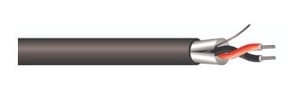When it comes to audio cables recording the right types of sound depends on what cables are chosen during the installation process. In order to recognize the right cables to use, it's important to understand the makeup and design of audio cables. Let's begin...

What's the difference between Analog and Digital cables?
Although both transmit audio, analog cables transmit electrical audio signals while digital cables transmit digital information in binary code.
Microphone level cables are the lowest level of signal for audio cables which is why microphones need to be fed in amplifier. These cables are shielded and balanced with an XLR connector and are ideal for shorter installations to avoid interference.
Mic Systems can be broken down into two categories:
- Portable Installations:
- Rugged
- Flexible
- High Flex Conductor
- Braid Shielding
- No UL Listing
- Permanent Installations:
- UL Rating
- Flame / Smoke
- Flex Conductor
- Foil shield ( Braid Shield - Optional)

A line level cable is exactly one volt and are the highest level signals before amplification. These cables transmit analog sound between audio components such as CD and DVD players, television sets, audio amplifiers, and mixing consoles up to 1000 ft. There are two traditional types:
- Commercial: used in commercial grade applications such as: stadiums, venues, hospitality, etc.
- Professional: studio applications such as: recording studio, etc.
Line Level cables are also divided into two categories by balanced and unbalanced.
- Balanced: the cables have three wires within the cables and three points of connection in the connectors.
- Unbalanced: the ground wire still surrounds the signal wires and is used as a shield against interference.

These carry the strongest types of signals and are unbalance with a heavier gauge than an instrument or microphone cable due to the higher voltage signals.
Interested in audio cables for an upcoming project? Click on the link below:


